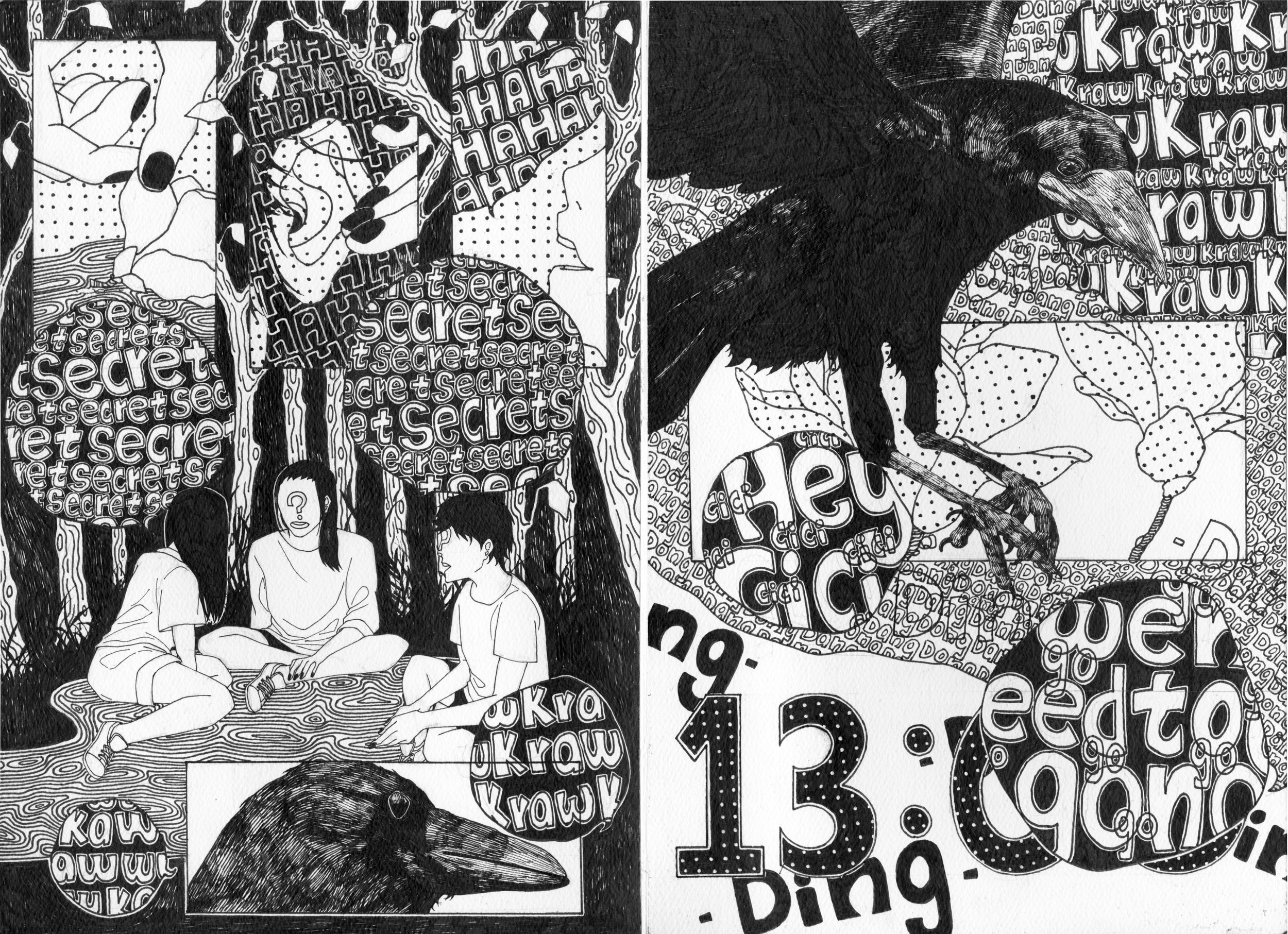Artist Statement
Last night, I traveled home through downtown. As I crossed the crowded streets the buildings stood out to me. While they were made of concrete, I envisioned each building becoming transparent, allowing me to see its occupants—people who have their own consciousness and ideas, each telling a story. A small baby gives a feeble cry, a distracted housewife breaks a plate—each is engaged in their daily life. There are many stories being told by these who hide beyond the walls. The fact that I am unable to fully understand the depth and complexity of the stories being told is overwhelming. Knowing that this happens every day, every second reminds me that I am not the center of the world, which weighs on me heavily. Suddenly, my existence seems insignificant. I become as light as a slip of paper being sucked out of a window. While not mine, these stories are mine to tell, to paint, to draw, to sew, to communicate with others, no matter their beliefs or pre-existing ideas.
Not everyone has the same ideology because of their social, historical, and environmental differences. However, it’s lucky that people will take from the same story a number of different things because they have different backgrounds and views. When clothes, shoes, books or bags are created from stories, their value is immeasurable. The idea that one person can love something that another person hates interests me greatly. I attempt to better understand the variety of emotions shared between the audience and a piece of art. In Chinese culture the fox often takes the form of a beautiful woman who attempts to seduce men. As I create, I ask myself how the story I tell can captivate and seduce my audience, like the fox. I attempt to develop an emotional bond with my audience, one that will leave a lasting impression.
When I was a child, I used to be a talkative person. However, after almost losing my ability to talk, I found that being a listener wasn’t all bad, as listening has provided me an opportunity to reflect. I still most often approach situations as an observer, as my speech impediment can sometimes prevent me from expressing myself. I have also found that I not only observe through listening, but through reading as well. One story in particular that has influenced me is Haruki Murakami’s Kafka on the Shore. It has caused me to believe everyone is attempting to find something they do not possess through love. My own love for observation has highly influenced my art; I attempt to tell a story that is relevant and provocative so that my audience falls in love with the work. Stories are like people: they have their own life, ideas and the ability to talk. My desire to share my observations both through my lens and the lens of others is what initially caused me to create a series of stories—to create art.










